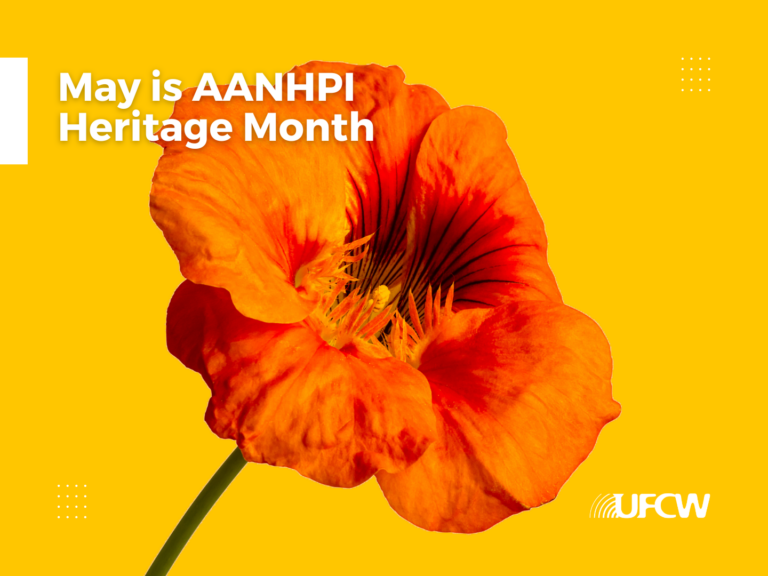In May, our nation celebrates Asian American, Native Hawaiian, and Pacific Islander (AANHPI) Heritage Month. The AANHPI community has played an essential role in American culture, diversity, and the economy. At UFCW, we recognize the critical role members of the AANHPI community have played as active leaders in labor movements, calling for improvements to labor conditions, and an increase in wages and worker benefits. As a result of these heroic community members, substantial change has been made.
The origins of this celebration date back to 1977, when Representative Frank Horton of New York and Senator Daniel Inouye of Hawaii introduced resolutions to proclaim a week in May as Pacific/Asian American Heritage Week. When neither of these resolutions passed, Representative Horton introduced a similar resolution in 1978, which was passed by the House and Senate and signed into law by President Jimmy Carter that same year. In 1992, Congress designated the month of May as Asian/Pacific American Heritage Month to commemorate the arrival of the first Japanese immigrants to the U.S. on May 7, 1843, and the completion of the transcontinental railroad on May 10, 1869.
Here are three things to know about the work done by AANHPI community members—past and present— to fight for justice for workers and union members nationwide.

On August 31, 1946, over 26,000 sugar workers refused to report to their jobs, shutting down all but one of the 34 sugar plantations across the Hawaiian islands—one of the most expensive strikes in history.
The International Longshore and Warehouse Union (ILWU) organized the strike as a protest against poor working conditions, lack of benefits, and employee mistreatment, fueled by an economy that colonial powers had historically controlled.
By 1946, one-fifth of Hawaii’s population, roughly 100,000 people, lived and worked on sugar plantations. With a diverse population of employees, including Chinese, Japanese, Korean, and Filipino workers, the ILWU made inclusivity a key part of their campaign, ensuring representative leadership in the strike committee and conducting multilingual meetings.
The organization of a diverse movement proved to be a success. After 79 days of striking, the ILWU secured housing, medical, pensions, and wage benefits for workers.
Today, Hawaii’s workforce represents the second-highest union density in the nation with 21.9 percent of employees being represented by a union. Ultimately, the 1946 Sugar Strike transformed the social and economic climate of Hawaii and improved working conditions across the region.

